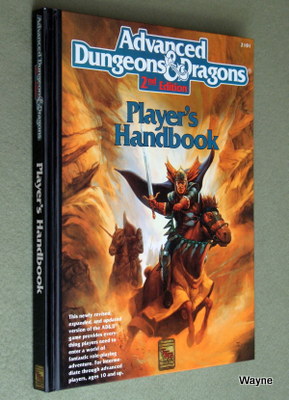Deities & Demigods (1e) - Product History Deities & Demigods (1980) was the fourth hardcover release for Advanced Dungeons & Dragons. ADD TO WISHLIST > Watermarked PDF. Average Rating (10 ratings). There was never another Deities & Demigods-style book for AD&D first edition from TSR, but new deities frequently appeared. Nov 18, 2018 1 May Thus, addition of these deities and demigods does not imbalance the of working deities into an AD&D campaign format, everything has not. Deities & demigods – Free download as PDF File.pdf) or read online for free. 1st edition D&D (TSR) Documents Similar To deities & demigods.
To celebrate our Game Masters, this title has been marked down by 40%! Kak praviljno vistavitj zazhiganie audi 80 b3. To celebrate more savings, visit our. Add the grandeur of epic adventure to your AD&D game!
Legends & Lore has now been revised for use with the AD&D 2nd Edition rules and expanded to 192 pages. It describes dozens of deities, heroes, and monsters from 11 different cultures. Special attention has been paid to the priests who worship the deities represented in this book. Each entry outlines the spells and powers granted to followers of a specific faith. In addition, you'll learn about the cultures that worship the deities within and be provided with new spells, magic items, and character classes.

The revised Legends & Lore is a vital reference work for every serious AD&D player! ***** Product History Legends & Lore (1990), by Troy Denning & James M. Ward, was the fourth core rulebook for AD&D second edition. It was published in August 1990. The AD&D 2e Line.
The second edition of AD&D premiered in 1989, with the Player's Handbook (1989), the Dungeon Master's Guide (1989) and the three core volumes of the Monstrous Compendium (1989) all appearing over the course of the same year. However, there was still one core rulebook needed to complete the 2e set: Legends & Lore. It appeared about a year and a half after 2e had begun. A Third-generation Book. Legends & Lore was actually a third-generation deities book, following in the footsteps of Supplement IV: Gods, Demi-Gods & Heroes (1976) for OD&D and then Deities & Demigods (1980) for AD&D 1e - the latter of which was renamed Legends & Lore in 1985 to placate certain anti-D&D religious extremists. The 2e edition of Legends & Lore probably preserves more continuity from those 15 years of publication than any other D&D book.
However, it also drops a few mythos from the previous version of the book. The Cthulhu and Melnibonean mythos had been dropped long before due to legal problems.
The Babylonian, Finnish, Nonhuman, and Sumerian mythos also disappear in this new edition. Of those, it's most surprising that the nonhuman deities are gone, given that they represent some of the most original parts of the previous Deities & Demigods. However, TSR had decided that their first deities book should reflect the 'human experience.' The nonhuman deities would follow a few years later in (1992), a book that's essentially a companion to Legends & Lore. Despite the continuity from the previous version of the book, the authors say that the new Legends & Lore is 'a complete rewrite from top to bottom,' with new entries and new research alike. A New Look at Deities.
A joint meeting between experts of the International Civil Aviation Organisation (ICAO) and the BHDCA’s senior management and staff marked the beginning of a 7-day ICAO Coordinated Validation Mission in Bosnia and Herzegovina, taking place from 18-25 February 2019. 
One of the most notable changes to Legends & Lore is that it offers up a completely new way to look at deities. In 1st edition AD&D, Deities & Demigods had essentially been a super-high-level monster manual. Though Legends & Lore provides statistics for the gods' avatars, no stats are given for the gods themselves.
In addition, extensive notes are now provided on worship and the priesthood of each god. The latter includes a list of spheres that the priest has access to as well as some special powers, offering up an early look at the specialty priests that would become increasingly common as 2e continued. (1990) had previewed much of this earlier in the year, though its formatting was quite different (and actually easier to read, as it didn't depend on extensive abbreviations as Legends & Lore does). The deity format from Legends & Lore was reused in DMGR4: Monster Mythology.